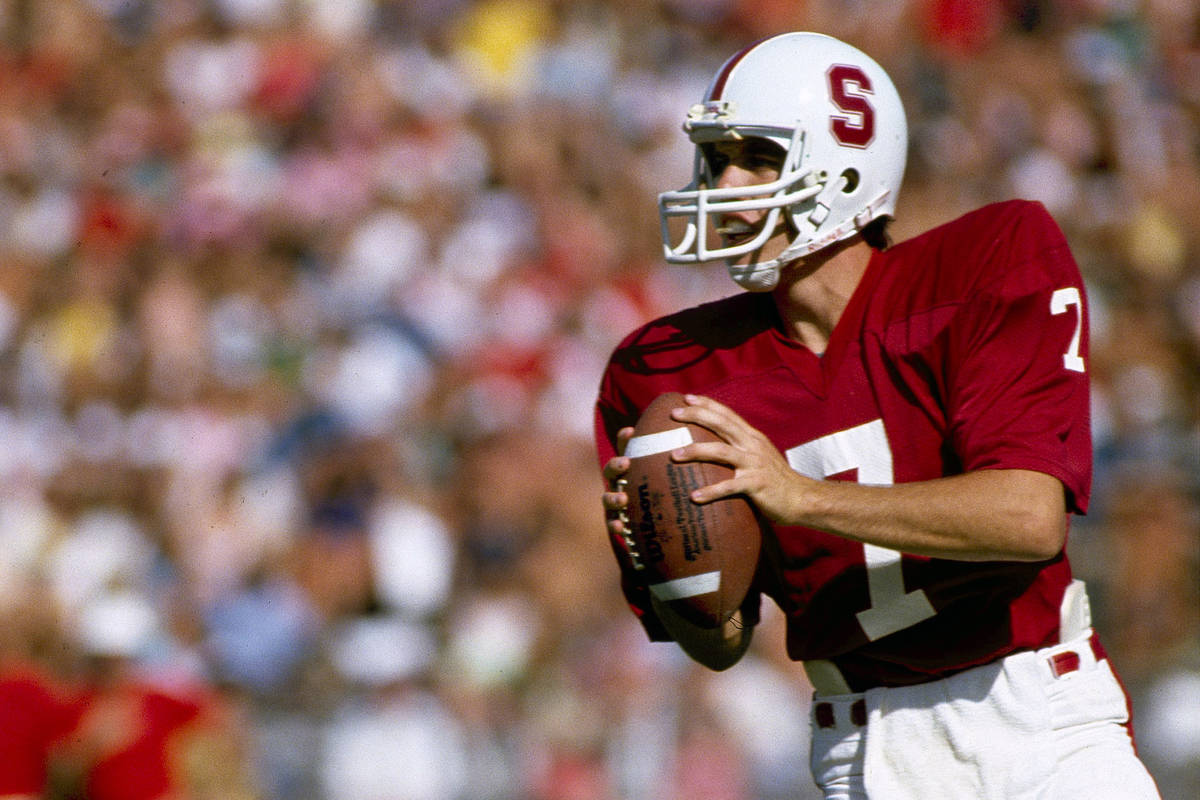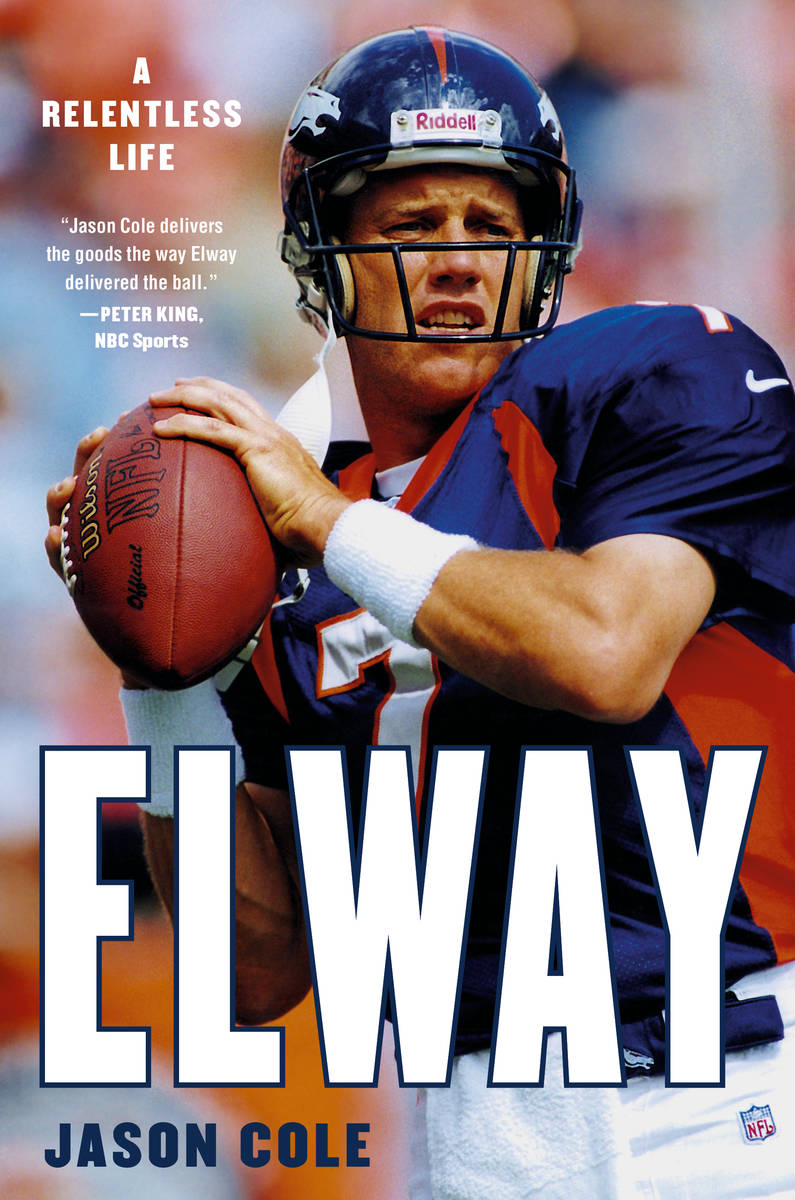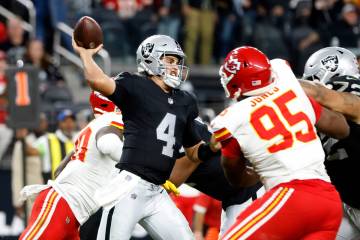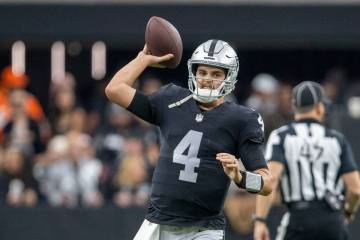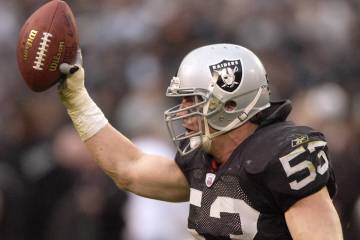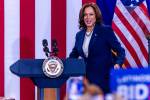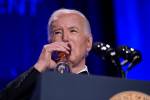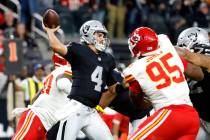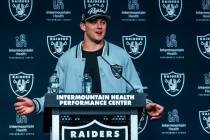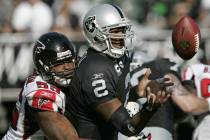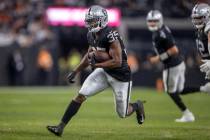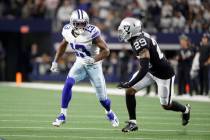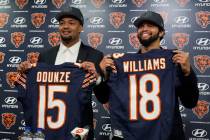Book excerpt: The day John Elway was nearly a Raider
Excerpted from ELWAY: A Relentless Life by Jason Cole. Copyright © 2020. Available from Hachette Books, an imprint of Hachette Book Group, Inc.
NFL commissioner Pete Rozelle was in the winter of his discontent in 1983.
He desperately needed Elway in the NFL, but not so desperately Elway could play for Al Davis and the Los Angeles Raiders. Depending on whom you believe, Elway was very nearly a member of the Raiders until Rozelle and the NFL nixed the deal. That was a bold move by a commissioner who was very much backed into a corner at the time.
By March 1983, Rozelle was dealing with a host of major problems. First, the NFL was still recovering from a player strike that cost the league seven weeks in the middle of the 1982 season, resulting in an abbreviated nine-game schedule for every team. That strike had undercut public confidence in the sport and threatened to impact the league’s television contracts.
Second, Baltimore Colts quarterback Art Schlichter had just admitted to gambling on sports, creating a huge black eye for the NFL. Schlichter was supposed to be a rising star. He had been the number four pick in the 1982 draft by the Colts, who hoped he would replace the great Bert Jones. Schlichter racked up more than $700,000 in gambling debts and turned himself in to the Federal Bureau of Investigation rather than fear the wrath of bookies who might force him to throw games.
Schlichter’s gambling not only caused Baltimore to pursue Elway with the number one overall pick, but it also added insult to its winless 0–8–1 season in 1982, which was preceded by a 2–14 record in 1981. As much as the Colts were an embarrassment on the field, they were worse off it. Team owner Robert Irsay was warring with Baltimore city officials about wanting a new stadium to replace decrepit Memorial Stadium, a sixty-year-old facility that was so cockroach infested that players would shake their clothes before getting dressed. Irsay had no tact and completely alienated himself from the city. In 1984, he infamously moved the team in the middle of the night, which served as de facto proof of why Elway didn’t want to play for him.
Rozelle’s third problem was the upstart US Football League. On April 6, 1983, the USFL opened play and was aggressively challenging the NFL. Heisman Trophy winner Herschel Walker, veteran NFL quarterback Doug Williams, and three future Hall of Famers (quarterbacks Steve Young and Jim Kelly and defensive end Reggie White) were among a host of star players who had signed or would soon sign with the USFL. The USFL also eventually had a flamboyant owner who wanted to do nothing more than irk the NFL. Donald Trump was quite the showman in the 1980s and, as it turned out, well beyond.
If that trio of issues wasn’t enough, Rozelle was reminded daily about the Elway problem. As Rozelle walked into the NFL office in Manhattan each day, the New York newspapers reported daily about the chance of Elway’s playing for the Yankees instead of his league. Rozelle was facing the possibility that the presumptive number one overall pick in his sport not only was going to skip out on playing in the NFL but also might play baseball for the most famous franchise in American sports in the very city where Rozelle worked and lived.
Between the strike, Schlichter, the state of the Colts, the USFL, and the New York Yankees, Rozelle was reminded of how the NFL had let Joe Namath get away to the New York Jets of the AFL in the 1960s. The failure to sign Namath fueled the AFL and put the NFL in a terrible bind. So, as Jan and Jack Elway were visiting the Yankees and being charmed by owner George Steinbrenner and manager Billy Martin (Jan received a necklace with a Yankees pendant on it) that March, Rozelle asked for a face-to-face meeting with Elway’s longtime agent Marvin Demoff. They had lunch in a downtown Manhattan hotel. Rozelle didn’t take long to make his point.
“Pete said he wanted John in the NFL and that was that,” Demoff says.
There was, however, one unstated exception to Rozelle’s edict: Elway couldn’t play for the Raiders and Davis, Rozelle’s hated rival and the NFL’s resident dissident.
…
With the Chargers out and the Cowboys talking to the wrong guy, the Raiders jumped to the top of the trade sweepstakes. Or at least that’s how it appeared.
The Raiders had just moved from Oakland to Los Angeles. They had Jim Plunkett, the former Stanford star, at quarterback. Plunkett was thirty-five and had gone through a history of injuries. He played the early part of his career with a poorly run New England organization after being the number one pick in 1971. Essentially, Plunkett played the career Elway hoped to avoid. Plunkett eventually ended up with the Raiders as a backup, got healthy, and led them to two Super Bowls.
As for Davis, the brilliant and enigmatic owner, he had a deep football background and loved quarterbacks who could throw deep. Davis hadn’t personally scouted Elway at all before the draft because he didn’t expect to be in position to get him. His interest was based on what his scouts were telling him and what his executives thought they could do now that Elway was on the trading block.
When Demoff first talked to Davis about a possible trade, Davis asked, in all seriousness, whether Elway could throw deep. Demoff says he chuckled and told Davis, “Al, don’t ever tell anybody you asked that question.” The other interesting thing about the Raiders is that when they talked to Demoff, they didn’t seem to acknowledge the existence of any other teams. It was as if the Raiders were their own entity.
“To Al, the Raiders were in a league by themselves,” Demoff says.
By contrast, other teams were consumed with the Raiders. During the talks with San Diego, Coryell called the Raiders “evil” and begged Elway not to play for them. It was almost like the negative recruiting at the college level.
The Raiders had the number twenty-six overall pick. That wasn’t much ammunition, but that never mattered to Davis, who was one of the most aggressive men in the history of the game.
That history of aggression was what undermined the deal. The foundation for Rozelle’s hatred of Davis had been built over the previous two decades.
Now, after the first season in Los Angeles, Davis was trying to trade for Elway. And Rozelle was having none of it. For all the pressure on Rozelle to have Elway in the NFL, there was no way Elway was going to the Raiders.
Raiders executive Steve Ortmayer was put in charge of making the deal. The first objective was to get a pick in the top six selections to help satisfy the Baltimore Colts. Ortmayer had the parameters of a deal with Chicago for the number six overall pick. The Raiders were going to give the Bears two players in exchange for the number six overall pick. The Bears got to choose one player from each of two groups. The first group was either cornerback Ted Watts (a 1981 first-rounder) or defensive tackle Howie Long (a second-round pick in 1981 who eventually became a Hall of Famer). The second group included linebacker Jeff Barnes and defensive backs Vann McElroy, Kenny Hill, and Mike Davis.
In the days leading up to the draft, Ortmayer called Demoff to say the Raiders had a deal with the Bears and, in turn, Baltimore. The Raiders would take the number six pick from Chicago, their own number twenty-six overall pick, and a first-round pick in 1984 and send those three picks to Baltimore for Elway. But on the night before the 1983 draft was set to open on April 26, Chicago general manager Jim Finks called Ortmayer to say there was a problem. Specifically, there was no trade. As the story goes, NFL executive Don Weiss called Finks to put the kibosh on the deal.
Finks, who had announced in late 1982 that he was leaving the Bears and stayed on through the draft because Chicago owner George Halas was ill, had always been considered very loyal to the league. By 1989, he was a leading candidate to replace Rozelle as commissioner until a group of eleven owners refused to vote for him.
“We tried very, very hard to make this happen. We worked the whole week leading up to the draft and it was going at quick speed because I knew [Baltimore general manager Ernie] Accorsi wanted [Dan] Marino,” Ortmayer says. “Then, the night before the draft, they pulled the plug. Finks called me on the final communication that this wasn’t going to happen. He said, ‘It’s not going to happen, they’re not going to let it happen.’
“This went higher than Don Weiss. [Rozelle] nixed it… . Al was angry, but it was sort of an ‘I told you so’ kind of angry because he never thought the league would let it happen in the first place.”
Fellow Raiders employee Mike Ornstein remembered coming in the morning of the draft and seeing Davis sitting in the room where the Raiders held their meetings.
“He was angry and said, ‘The league stopped the deal.’ I remember leaving the office the night before thinking the deal was done and coming in the next morning and it was off,” Ornstein says.
Days after the trade of Elway to Denver, Davis openly called for an investigation of the matter.
“We think there are enough facts in the Elway-Los Angeles Raiders-Baltimore Colts-Chicago Bears file to warrant filing an action which would negate the [Elway-Denver] deal,” Davis said on May 3, 1983.
No action was ever filed. Finks responded angrily to Davis’s charge.
“I think Al Davis has gone over the deep end,” Finks said later that same day. “I’ve heard all the charges and there is not a shred of truth in them. It all started on the Sunday before the draft, but we were never even close to making a deal. I never talked with Al Davis and only Steve Ortmayer. We demanded two players from them and they wouldn’t agree and that ended it.”
Finks said the Bears wanted both Watts and Long in the deal. Finks also said of Davis, “He is a very difficult man to follow. It is just a typical Al Davis reaction. I’m not going to lose any sleep over it.”
Finks died in 1994, Rozelle died in 1996, and Weiss passed away in 2003, taking their sides of the story to the grave. Former NFL vice president Joe Browne strongly denied that the league interfered with the deal.
“Finks told me on several occasions Al Davis backed out,” says Browne, adding he knew of at least six people who would corroborate his account. “There was never any deal, but in times like this, there always seemed to be some type of orchestrated paranoia from the Raiders.”
For his part, Demoff has always doubted the league’s story.
“There was a deal and then suddenly there wasn’t,” Demoff says, clearly still of the belief that the league interfered. At the time, Demoff said, “Something happened. Someone showed an unusual interest in the deal and it wasn’t [the Raiders] or Baltimore… . Let’s just say I’d have some interesting testimony.”
To purchase this book, click on this link: https://www.hachettebookgroup. com/titles/jason-cole/elway/ 9780316455770/



